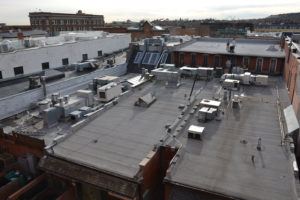 Over the years, we have seen some huge advancements in infrared (IR) thermography which has led to its introduction into building inspections. With a particular focus on roofing, they can be checked for moisture and various other problems before they become a major issue. Nowadays, millions of square feet are inspected each and every year.
Over the years, we have seen some huge advancements in infrared (IR) thermography which has led to its introduction into building inspections. With a particular focus on roofing, they can be checked for moisture and various other problems before they become a major issue. Nowadays, millions of square feet are inspected each and every year.
Costing around $8-10 per square foot, the replacement of damaged roofs can be an expensive exercise and Americans spend billions of dollars on it each year. When it comes down to it, the main cause of this is moisture, leaks, and wet insulation – sadly, these go undetected for a long time. Since thermal imaging can pick up any signs of moisture in a matter of seconds, it is superb for detecting problems within the building.
Throughout the day, the roof will absorb heat to then disperse it when the temperatures fall at night. When there is moisture, the heat releases much slower so the wet and dry areas can be seen clearly. Displayed as different colors, you will see which areas of your roof are in good health and which areas are struggling.
In order to expand their services, it is a good idea for all inspectors to learn thermal imaging. With a roof inspection, problem areas can be diagnosed early such as trapped moisture which will eventually lead to structural damage and costly repairs.
